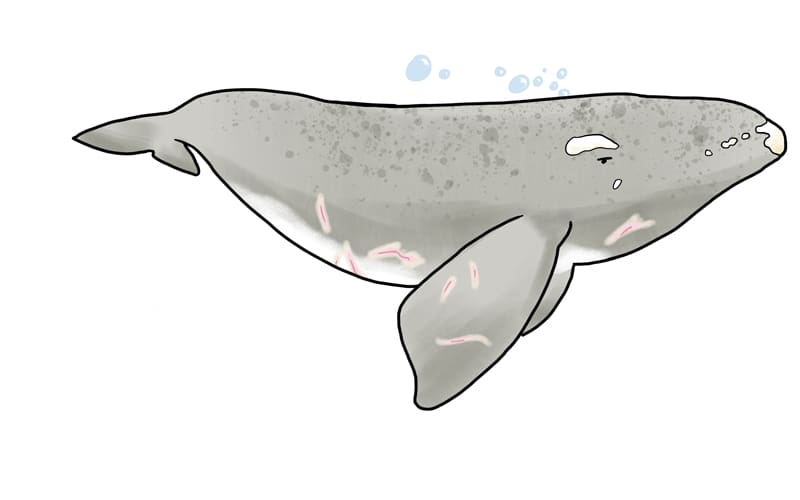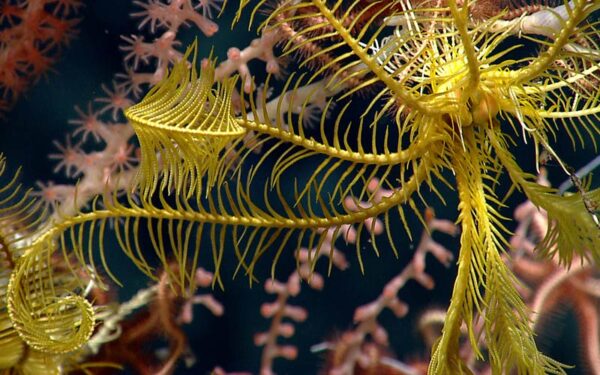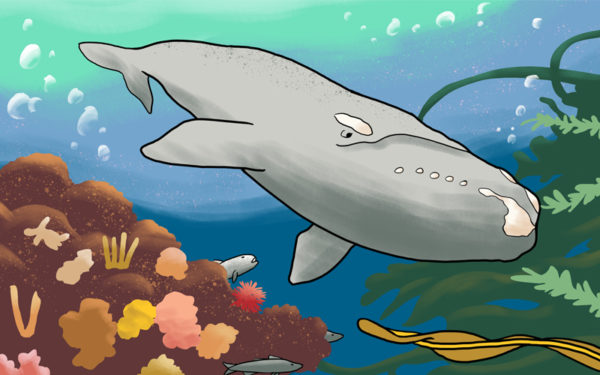
Nearly every right whale alive today has been harmed by fishing gear. Maine must be a part of the solution to this problem that's pushing right whales closer to extinction. Illustration: Josh Kramer
There have been eight sobering North Atlantic right whale deaths this summer. We’re well past the time for action to prevent more needless deaths. With barely 400 right whales remaining on Earth, every loss threatens an entire species key to New England’s ocean health.
Humans pose the biggest threat to right whales’ survival, and it’s our responsibility to stop killing them. Last month, however, Maine’s state leadership rallied against a proposal that would help save our iconic whale.
With extinction looming, now is not the time for political posturing. Fishing and right whales can co-exist, but it’s going to take close collaboration and forward-looking leadership, not obstruction. Maine must be part of the solution if we are to save the right whale from extinction.
To Prove Maine Fishing Gear Isn’t Harming Whales, Mark It
Entanglement in fishing gear is the biggest threat to right whales. Unlike ship strikes, which often result in immediate death, getting wrapped up in thick, heavy fishing gear causes infection, exhaustion, and starvation. That means that even whales that manage to escape often bear the scars of entanglement and suffer health impacts. These impacts include female whales becoming too weak to reproduce – which is doubly concerning given that right whale deaths continue to outpace births. Nearly every right whale still alive has been entangled.
Claims that Maine’s lobster fishery does not entangle right whales are, quite simply, impossible to back up. This is in large part due to the industry’s longstanding opposition to mark their gear so the source of entanglements can be identified. More than 80 percent of entanglement deaths cannot be tied to a specific fishery of origin. Meanwhile, 70 percent of Maine’s lobster fishing gear is unmarked.
We do know that lobster gear entangles right whales and that more than 80 percent of all U.S. lobster fishing lines – connected to nearly 3 million traps – are in Maine. We know that right whales congregate in the Gulf of Maine, and we know that most have been entangled, many of them dragging the iconic lobster traps at the end of lines for hundreds of miles.
We also know that no lobsterman wants to injure a right whale (or lose their traps). But if Maine gear truly isn’t responsible for entanglements, there’s an easy way to prove it: Maine lobster fisheries must mark their gear.
But marking gear is a no-brainer first step that should have been taken a decade ago. More needs to be done to bring right whales back from the brink of extinction.
Saving Right Whales By Reducing Rope in the Water
Earlier this spring, NOAA Fisheries gathered fishermen, scientists, resource managers, and environmental advocates from across New England to discuss the dire plight of right whales. This diverse group of experts, called the Take Reduction Team, was charged by federal regulators at NOAA Fisheries to develop recommendations for reducing the risk of severe injuries and deaths to right whales by at least 60 percent. They reached a near-unanimous agreement on a plan to do just that.
The plan allows states to choose how to reach the target number. Representatives from Maine proposed reducing the number of vertical lines connecting traps to buoys in the water, as well as using weak links that are intended to break if a whale becomes entangled. Maine’s Department of Marine Resources, the Maine Lobstermen’s Association, and all fishing representatives on the Team voted in favor of this action.
However, Maine is now walking back from the commitment it made.
It’s important to note that CLF does not think that the Take Reduction Team’s plan goes far enough, and it lacks critical details. But these measures were developed with lobstermen at the table through a consensus framework. Undermining this collaborative process at this critical time jeopardizes our ability to achieve a solution that protects the remaining right whales while keeping the lobster industry thriving.
What’s Next?
This month, federal regulators at NOAA are holding public hearings across New England as they consider the states’ plans to reduce entanglement risk. This is an important opportunity to make a difference in the future of the right whale.
NOAA needs to hear from you: your testimony has the power to convince regulators to enhance protections. Join us at a hearing near you to let them know, face to face, that Maine must be a part of the solution and must do more to help save these animals.
And if you can’t make a hearing, make a call to your Senator or Representative and let them know that politics should take a back seat when it comes to preventing the extinction of these majestic creatures.
At a hearing or on the phone, let NOAA know that:
- Right whales can recover, but we need to act now
- NOAA should begin the process for creating new protected areas for right whales
- Lobster and crab fisheries must be required to mark their gear



